BARNESBORO & SPANGLER, PA (NORTHERN CAMBRIA)
Barnesboro traces its history back to the 1890s, and the town was incorporated in 1894. The community is best remembered for Barnes and Tucker's Lancashire coal mines,
named after founder Thomas Barnes's birthplace of Lancashire County, England.
Thomas Barnes's partner was Alfred Tucker.
Barnes and Tucker Company's headquarters were located in Barnesboro. There were
the ususal labor troubles in this community in the 1920s. Througout the 20th Century mines around Barnesboro produced millions of tons coal. In 1969 the well known Lancashire No. 15 mine closed. This
was one of the earliest coal mines to use a Joy continuous mining machine in 1949.
Barnes and Tucker closed the last of their Cambria County mines, Lancashire No. 24B, in 1986.
Life in Barnesboro revolved around mining coal, but there was also logging / lumbering, a shirt factory, and a brewery. It was, and is, more than a coal company "patch" town. Also, it
was a commerical hub for surrounding coal camps like Marsteller and Bakerton.
Employees of Madeira-Hill Coal Mining Co. and Springfield Coal Mine Corporation lived at Spangler. But Spangler was a fully-functioning borough and not just a coal company town. A hospital for injured
coal miners opened in 1909. It was demolished in the 2000s.
On January 1, 2000 Barnesboro merged with neighboring Spangler, Pa. and the combined communities are
now known as Northern Cambria, Pa. From what I could briefly observe they have a viable borough and may be trying to move forward into a post-coal future.
Looking out over the area formerly known as Barnesboro.
St. Mary's Ukrainian Catholic Church.
This row of company houses may have been a bosses row.
Back of the masonry company homes.
Another row of coal company houses, these were for Madeira-Hill Coal Mining Co. Shaft No. 4 mine.
And the back of those houses, too. However, there is more to Northern Cambria than old "patch town" houses. Most parts of it appear
to just be small town America.
Black post-coal mining land on the edge of Spangler / Northern Cambria in a state of partial reclamation. This was the tipple area
of Springfield Coal Mine Corporation's No. 4 mine.
These now-modified houses were once owned by Barnes and Tucker Co. to house the employees of their Lancashire No. 7 mine.
This was originally the Barnes & Tucker Company's main office. It was originally built in 1923, with additions in 1964
and 1981. It amazes me that, as late as 1981, this firm's coal mining business was still brisk enough that they thought they should build another addition. And they
still employed approximately 1,600 people at that time. A decade later Barnes & Tucker Co. had less than 20 employees.
The "downtown" section still has some life left in it.
Prince of Peace Roman Catholic Church.
St. John the Baptist Byzantine Catholic Church.
Both churches are located on the same street.
The coal industry attracted enough Jewish merchants that they built the B'Nai Israel Congregation synagogue in the 1920s. It closed in 1968.
Detail of the synagogue door.
Sources:
Fitzsimons, Gray, editor. Blair and Cambria County, Pennsylvania; An Inventory of Historic Engineering and Industrial Sites. 1990.
DiCiccio, Carmen. Coal and Coke in Pennsylvania. Commonwealth of Pennsylvania, Pennsylvania Historical and Museum Commission, 1996.
Northern Cambria Borough Comprehensive Plan.
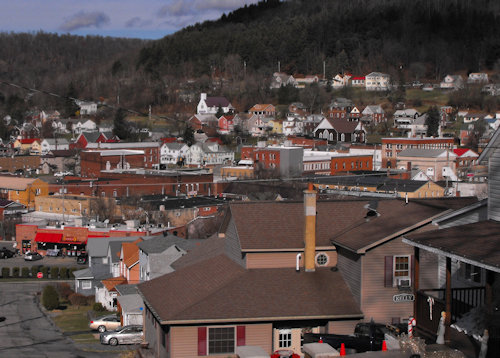
December 2021 image by author
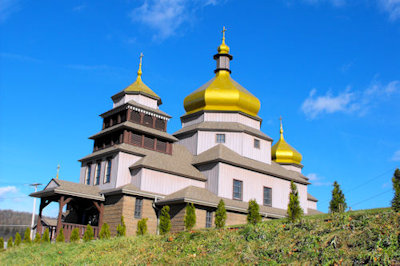
December 2021 image by author
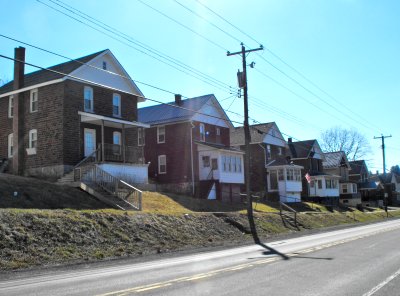
March 2021 image by author
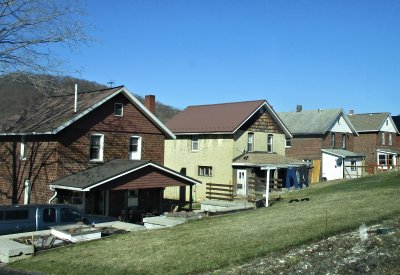
March 2021 image by author
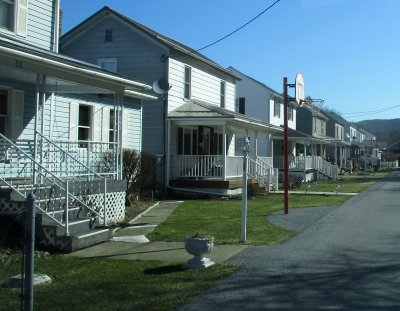
March 2021 image by author
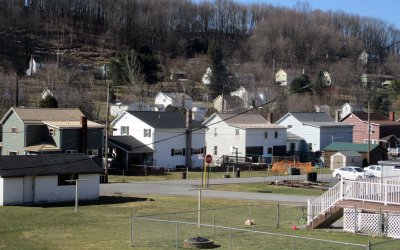
March 2021 image by author
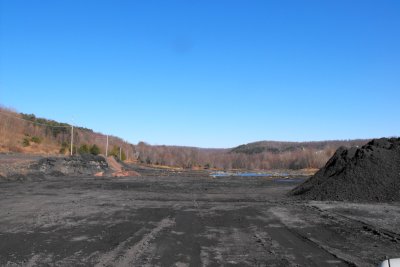
March 2021 image by author
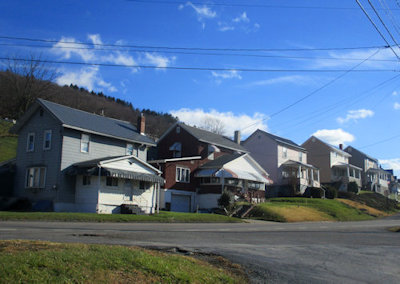
December 2021 image by author
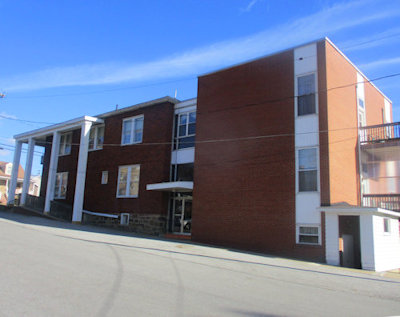
December 2021 image by author
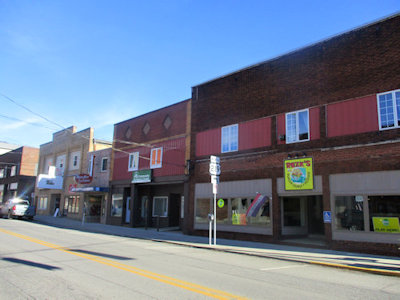
December 2021 image by author
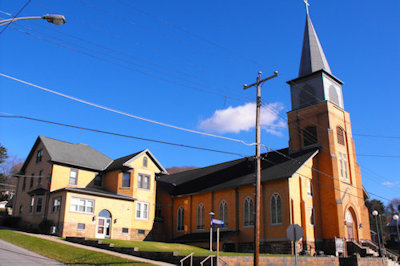
December 2021 image by author
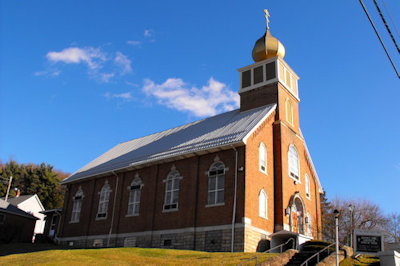
December 2021 image by author
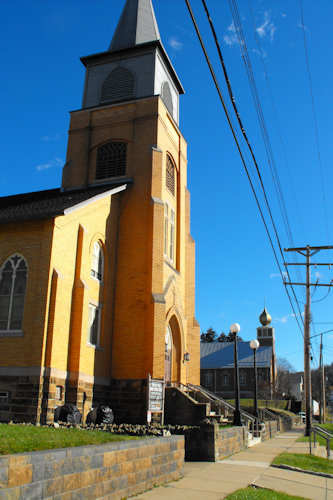
December 2021 image by author
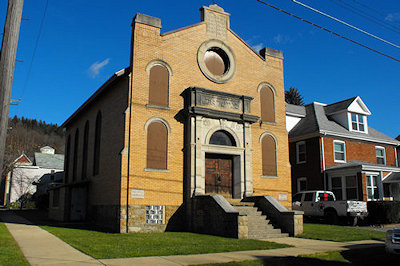
December 2021 image by author
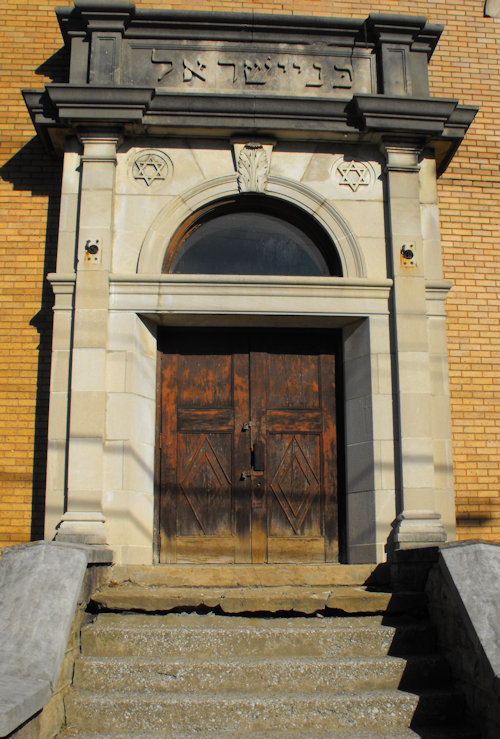
December 2021 image by author
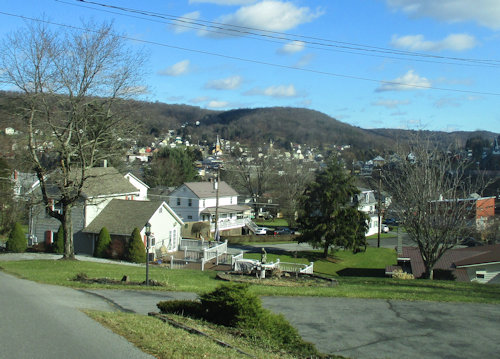
December 2021 image by author
